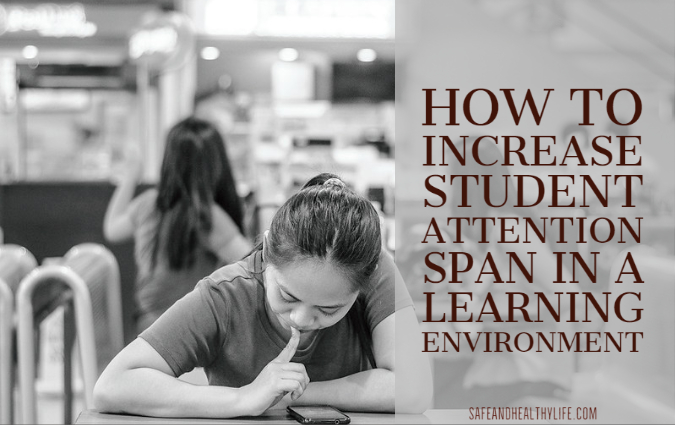
It is quite hard to keep students’ attention if they are uninterested in what you want them to focus on. Moreover, the younger the students are, the more difficult this task becomes.
Experts say that an average person should be able to concentrate on certain things for 2-5 minutes multiplied by their age. Therefore, a 20-year-old student should be able to focus on 40-100 minutes.
However, this estimate also depends on the task. If a student is motivated and excited about the topic, it is much easier for them to focus.
If an assignment is difficult to complete, keeping attention is becoming a real challenge.
However, Andrew Just, a writer from essaypro.com, has a few tips that can help in increasing students’ attention and improving their academic record.
Be Creative
Regardless of age, students are attracted by something new and creative. If you know that the topic you are going to discuss is usually difficult for comprehension, it is better to make lessons as interactive as possible.
Give students the opportunity to act instead of forcing them to sit and listen. Let them be creative by enforcing this creativity yourself.
Introduce some breaks or make sure they do some simple tasks whenever some important information is learned. It really helps students stay focused on the subject.
Introduce Physical Activity
The younger students are, the more difficult it is for them to sit calmly. They have a massive amount of energy that they need to release. Thus, if you have something to explain to them, it is better to break it up with physical activity.
This tip may not seem to be useful for older students, but, in fact, their brain activity also improves if they have a 5-minute break after every 25 minutes of concentration. If you add a little flexibility to your lessons, the performance will improve significantly.
Adjust the Pace
If you see that the class does not keep up with you, it is better to slow down your pace. Pay attention to how students are doing and adjust the material per their learning needs. Do not hurry up to achieve some unclear goals if you see that students are lagging behind.
Your instruction and their performance are directly correlated. If you find the pace that would make your students comfortable, you can expect a more enthusiastic approach to learning.
Overall, it makes sense to slow down if needed and achieve better results in the long run.
Remove Distractions
It is also important to understand that it is not enough to make students sit in the classroom. You should call for their attention, especially if they are supposed to complete a difficult task.
To do this, you should properly organize the workplace so that students have nothing else to focus on rather than the task they have.
Make sure all audio and visual distractions are removed, so their concentration is where it needs to be. Decrease the number of potential attention-grabbers to have 25-30 minutes of students’ full attention.

(Source: Flickr)
Include Gaming Experience
Regardless of their age, students learn better when they play games. You can include some memory games in your lesson plan to increase their attention span.
Moreover, it would also add some fun to the lesson, making the overall information less difficult to comprehend.
Do not make these games too complicated. Such activities involve memory centers in the brain and increase attention. Your primary goal should be to help students concentrate rather than make them preoccupied with the game itself.
Break Tasks into Pieces
When you see that the topic is too complicated and the assignment is too big, develop strategies to make learning simpler.
You are in control of the process, so you can make it easier for them. If the task includes several parts, break it. Make students comfortable with the project before forcing them to complete it all at once.
Also, students may get tired when they are requested to complete everything in one sitting. Thus, splitting the task into a few pieces and showing students that it is actually bearable and possible to do will definitely bring some fruit.
Make Students Rate Tasks
If you see that some tasks or learning materials are especially unpopular among students, it is wise to ask them to rate the rest of the tasks. You will be able to see a better picture of what activities need more time and effort.
Thus, it will be possible to reduce the time dedicated to easier assignments to add it to the most difficult tasks.
It will also empower students because they will be offered to take part in lesson planning.
Needless to say, such an approach can decrease their level of frustration with tasks.
Arrange Competitions
Nothing stimulates the brain’s work better than the competition. If you add some fast and easy activities to your class, students are likely to get much more value from it.
For example, you can offer some mystery prize for the completion of certain tasks or come up with other creative ways.
Do not stick with conventional ways of learning. Encourage students to be more attentive by fueling their morale and team spirit.
Practice Attention
The best thing about attention is that it can actually be trained. It is wrong to assume that some people simply cannot concentrate. In fact, they are just less trained than others.
Thus, as a teacher, you can encourage students to practice attentive behavior.
To do that, it is enough to use an electronic timer. Make students focus on a certain object for a while.
Then, let them discuss whether they were able to focus and what they have noticed about the object in question.
Such attention breaks should take place several times within each lesson. These exercises will definitely improve their ability to keep their attention on.
Final Words
Increasing student attention span should be a top priority for educators. Failure to do that leads to poor academic performance and students’ inability to complete the required tasks.
Creativity and gaming experience has a positive effect on the brain’s work. Students who are encouraged to take a proactive role in lessons usually demonstrate better learning outcomes, regardless of their difficulty.
Some unconventional learning techniques such as breaks for physical activity or attentive behavior practices also have a surprising effect on memory and concentration.
Overall, some adjustments in the classroom as well as in the learning process can be extremely helpful in boosting students’ academic performance. Do not hesitate to practice some of the aforementioned recommendations to see it all in action.
About The Author:
Donald Jefferson is a professional writer with a Computer Science degree and over 5 years of independent journalistic experience. He often engages in journalistic research related primarily to the field of education. In this article, Donald analyses strategies that can increase students’ attention and concentration levels. He advises teachers to adjust the learning environment and lesson plans to meet individual students’ needs and fuel their interest in the subject or task.




